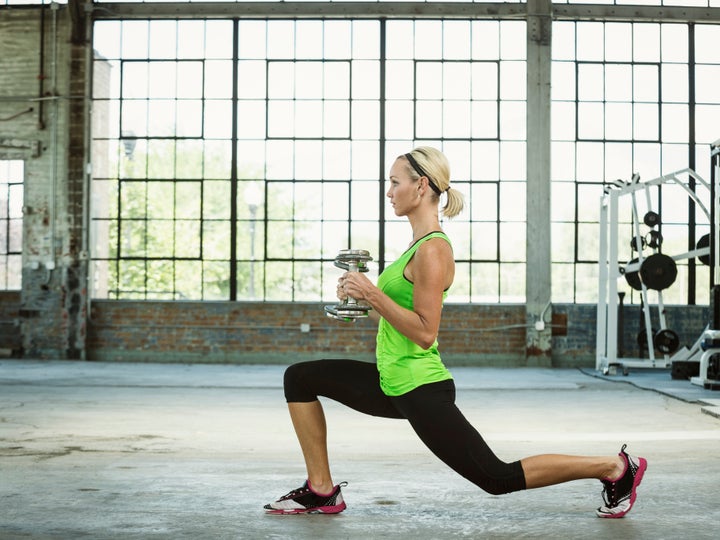
There's a reason hardcore fitness geeks call squats the "king of exercises." When done correctly, they're fantastic for your body. Squats -- as well as other weight-bearing moves like lunges -- strengthen your glutes, quads, hamstrings and core. They can also do wonders for your balance and coordination. (See above to learn some squat variations, courtesy of DailyBurn 365.)
Want even more incentive to up your strength training game? Check out these unexpected reasons to incorporate leg exercises into your workout routine:
1. They're good for your knees

It's a myth that doing squats damages your knees. When executed correctly, squats actually strengthen the leg muscles in the front and back of the thigh that support the knee.
"Building up the muscle around the joints and, more specifically your ligaments, prevents you from strains, torn or twisted ligaments," Joe Ardito, founder of FitCrush personal training in New York City, told The Huffington Post.
2. You'll run faster

Want to improve your speed? Try adding leg exercises to your cross-training routine.
"Squats increase your power and help you start strong, attack hills and uneven terrain and lengthen your stride," Ardito explained, noting that squats can also help runners to sprint faster and finish stronger.
"Squats develop body awareness posture, core strength and body alignment, which are all paramount to good, safe running," he said.
3. To jumpstart your metabolism

Because muscle burns more calories than fat, increasing your body's muscle content can go a long way toward reaching your overall fitness gals.
Two great ways to build muscle: squats and lunges. “If you’re looking to lose fat, go with strength training,” trainer Nick Tumminello, author of Strength Training for Fat Loss told Business Insider.
"Watch your diet to reveal your shape, and strength train to improve that shape."
4. To build a stronger core

While ab exercises like sit-ups and crunches might seem like the pathway to a stronger core, those moves only work the abdominal muscles, and can aggravate your back. Leg exercises like lunges and squats are actually a better bet for a strong core, because they work various core muscles at the same time, without putting a strain on your back. (Planks are another great core-strengthening move.)
Why focus on your core? A strong core is the cornerstone of a strong body, and developing one can protect you from injury, improve your posture and give you strength and power for your day-to-day activites.
5. To help manage diabetes and recover after a stroke

The American Heart Association recommends that Americans incorporate strength-training exercises like squats and lunges into their exercise routines twice a week.
Strength training isn't necessarily off-limits for patients who've had a heart attack or stroke, either. Physical activity can actually reduce your risk of having additional heart problems, by improving cardiovascular fitness, walking ability and strength.
For diabetics, strength training can help manage insulin resistance. Several small studies have found that resistance training can help combat metabolic dysfunction in patients who have type 2 diabetes.
Want to learn more? Here's a guide to doing proper squats and another for lunges. As always, anyone looking to start a new exercise regimen should talk to a doctor before starting.
We want to help you feel stronger, happier and more empowered. Sign up for our newsletter and join our 30-Day Move More, Feel Better challenge. We’ll deliver tips, challenges and advice to your inbox every day.
Use our challenge calendar below to stay on track — it can even sync to your own schedule and send reminders to your phone:
